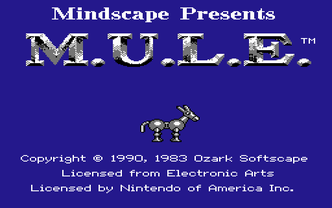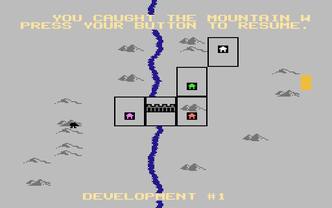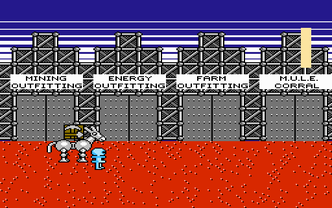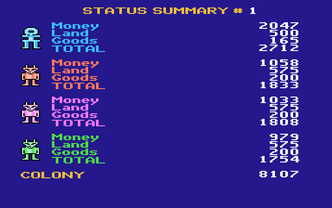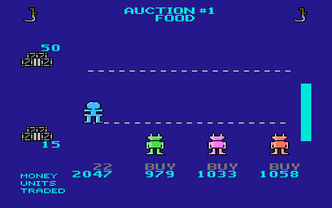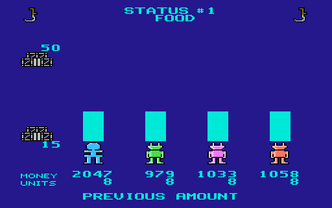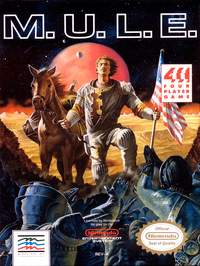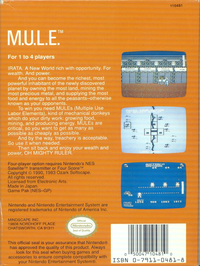Navigation:
M.U.L.E. Nintendo
M.U.L.E. is a classic game of extraterrestrial strategy and economic simulation, in which up to four players struggle to become the master of the planet Irata.
M.U.L.E. is about four hopeful explorers trying to make a fortune on a virgin planet. This is done by producing various goods (Food, Energy, Smithore, Crystite). Each of these goods have their uses: if you don't have enough food, you will have less time during your turn. If you don't have enough energy, your output will be lower. If enough smithore isn't produced, there will be a shortage of M.U.L.E.s. Crystite is the big earner that can make or break your game.
You start the game by selecting your race. Some are easier to play, some harder. There are three levels of difficulty, in the easiest the game only lasts 6 turns, but the real game is 12 turns. Crystite is not available at the easiest level.
Each turn starts with land claim. Each player gets to choose a spot of land for themselves from the map. If two players choose the same spot, the player with less money wins. The map consists of different landscape. River is best for producing food, plains for energy, mountains for smithore. Crystite is hidden and must be first found by taking a land sample to the town.
After the land claim each player takes turns in cultivating their land and do other tasks. They can buy M.U.L.E.s to start production on their land, sabotage other players by buying M.U.L.E.s and letting them loose, try to catch the Wumpus for cash and try to find crystite veins. The time to do these things depends on if the player has enough food. Finally the player goes to the casino and wins a small amount of money, depending on how much time was left.
After the cultivation phase is the production phase where each land produces an amount of goods depending on a number of factors such as if the player has enough energy in storage, what type of land is used, and some random events such as sunspots that increase energy output. Also, if the same player has plots producing the same goods next to each other, they gain a bonus. Three plots of same production type anywhere on the map by the same player also gives a bonus.
Third phase is the auction. Here the players buy and sell their goods on open market. Players negotiate the price by moving up and down on the screen. The shop also has prices that depend on how abundant or scarce the goods is. So if there is a shortage of food, the price goes up and vice versa. This allows for various tactics, especially if one player manages to monopolize food, energy or smithore production. If there is no food, others don't have time to change their production types, if there is a shortage of energy, their land won't produce and if there are no M.U.L.E.s they can't change production type on t
